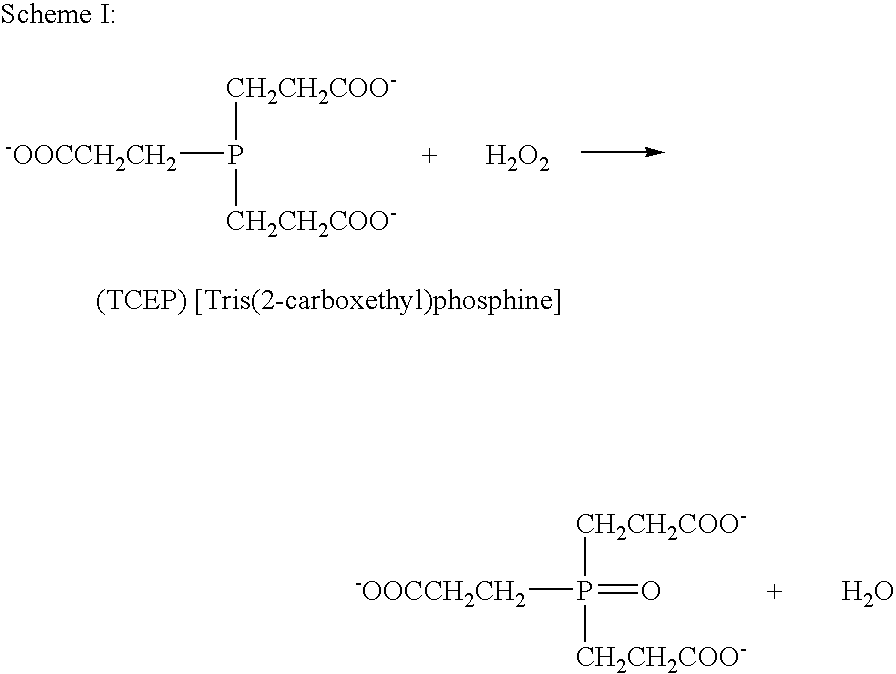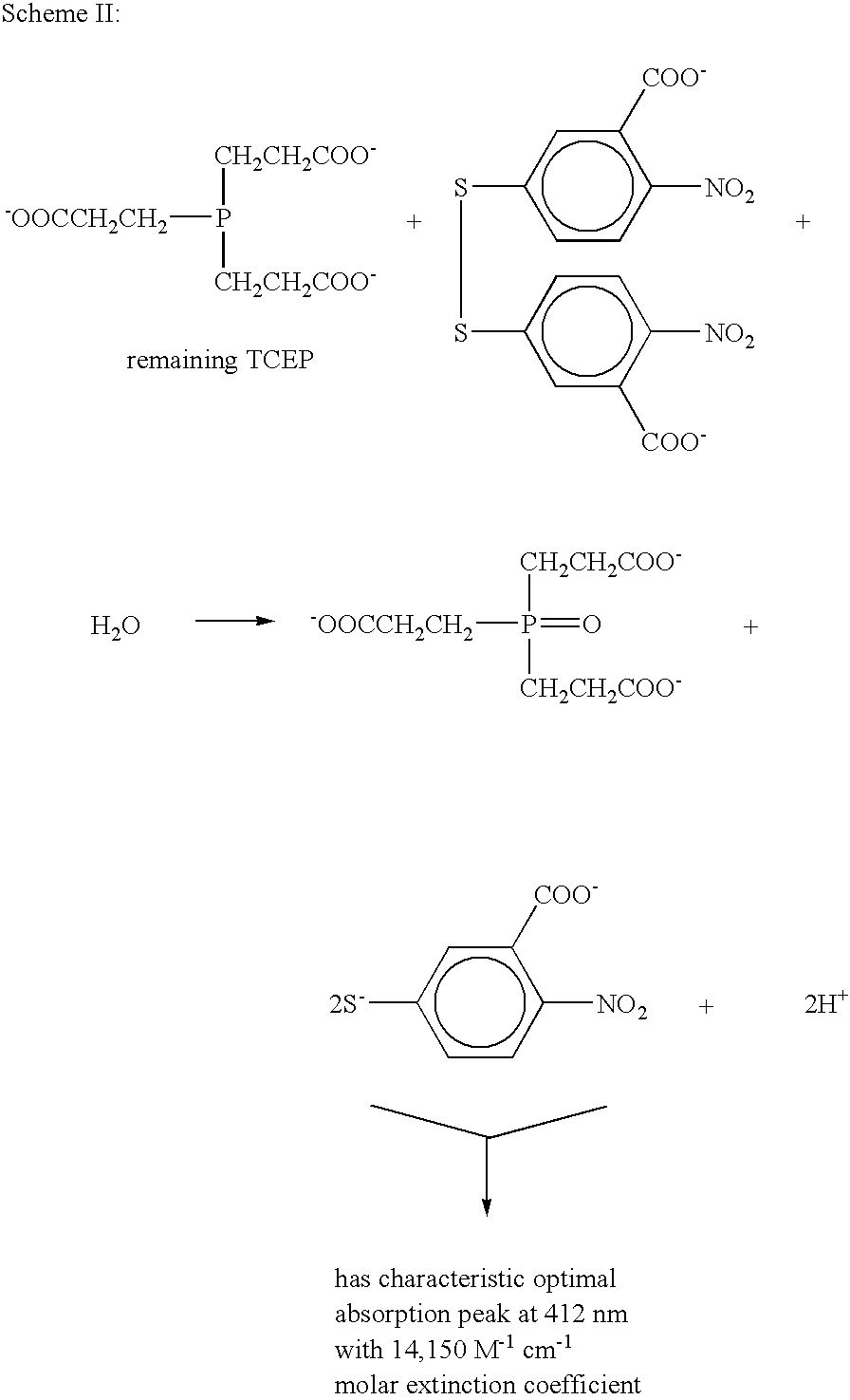Composition comprising a metal chelator and a method of treating amyloidosis by administering the metal chelator
- Summary
- Abstract
- Description
- Claims
- Application Information
AI Technical Summary
Benefits of technology
Problems solved by technology
Method used
Image
Examples
example 1
Copper-Induced, pH Dependent Aggregation of Aβ
Materials and Methods
a) Preparation of Aβ Stock
[0297]Human Aβ1-40 peptide was synthesized, purified and characterized by HPLC analysis, amino acid analysis and mass spectroscopy by W. M. Keck Foundation Biotechnology Resource Laboratory (Yale University, New Haven, Conn.). Synthetic Aβ peptide solutions were dissolved in trifluoroethanol (30% in Milli-Q water (Millipore Corporation, Milford, Mass.)) or 20 mM HEPES (pH 8.5) at a concentration of 0.5–1.0 g / ml, centrifuged for 20 min. at 10,000g and the supernatant (stock Aβ1-40) used for subsequent aggregation assays on the day of the experiment. The concentration of stock Aβ1-40 was determined by UV spectroscopy at 214 nm or by Micro BCA protein assay (Pierce, Rockford, Ill.). The Micro BCA assay was performed by adding 10 μl of stock Aβ1-40 (or bovine serum albumin standard) to 140 μl of distilled water, and then adding an equal volume of supernatant (150 μl) to a 96-well plate and measu...
example 2
Free Radical Formation and SOD-Like Activity of Alzheimer's Aβ Peptides
Materials and Methods
a) Determination of Cu+ and Fe2+
[0329]This method is modified from a protocol assaying serum copper and iron (Landers, J. W., et al., Amer. J. Clin. Path. 29:590 (1958)). It is based on the fact that there are optimal visible absorption wavelengths of 483 nm and 535 nm for Cu+ complexed with bathocuproinedisulfonic (BC) anion and Fe2+ coordinated by bathophenanthrolinedisulfonic (BP) anion, respectively.
[0330]Determination of molar absorption of these two complexes was accomplished essentially as follows. An aliquot of 500 μl of each complex (500 μM, in PBS pH 7.4, with ligands in excess) was pipetted into 1 cm-pathlength quartz cuvette, and their absorbances were measured. Their molar absorbancy was determined based on Beer-Lambert's Law. Cu+-BC has a molar absorbancy of 2762 M−1 cm−1, while Fe2+-BP has a molar absorbancy of 7124 M−1 cm−1.
[0331]Determination of the equivalent vertical pathle...
example 3
Cell Culture and Cytotoxic Assays
[0352]Several different assays may be utilized to determine whether a candidate pharmacological agent identified by any of the above-summarized assays is capable of altering the neurotoxicity of Aβ. The first is the MTT assay, which measures the reduction of 3-(4,5-dimethylthiazol-2-yl)-2,5,diphenyl tetrazolium bromide (MTT) to a colored formazon (Hansen et al., J Immunol Methods, 119:203–210 (1989)). A second cytotoxic assay is the release of lactic dehydrogenase (LD11) from cells, a measurement routinely used to quantitate cytotoxicity, in cultured CNS cells (Koh, J. Y. and D. W. Choi, J. Neurosci. Meth. 20:83–90 (1987). While MTT measures primarily early redox changes within the cell reflecting the integrity of the electron transport chain, the release of LDH is thought to be through cell lysis. A third assay is visual counting in conjunction with trypan blue exclusion. Yet another assay is the Live / Dead EukoLight Viability / Cytotoxicity Assay (Mol...
PUM
| Property | Measurement | Unit |
|---|---|---|
| Molar density | aaaaa | aaaaa |
| Molar density | aaaaa | aaaaa |
| Molar density | aaaaa | aaaaa |
Abstract
Description
Claims
Application Information
 Login to View More
Login to View More - R&D
- Intellectual Property
- Life Sciences
- Materials
- Tech Scout
- Unparalleled Data Quality
- Higher Quality Content
- 60% Fewer Hallucinations
Browse by: Latest US Patents, China's latest patents, Technical Efficacy Thesaurus, Application Domain, Technology Topic, Popular Technical Reports.
© 2025 PatSnap. All rights reserved.Legal|Privacy policy|Modern Slavery Act Transparency Statement|Sitemap|About US| Contact US: help@patsnap.com



